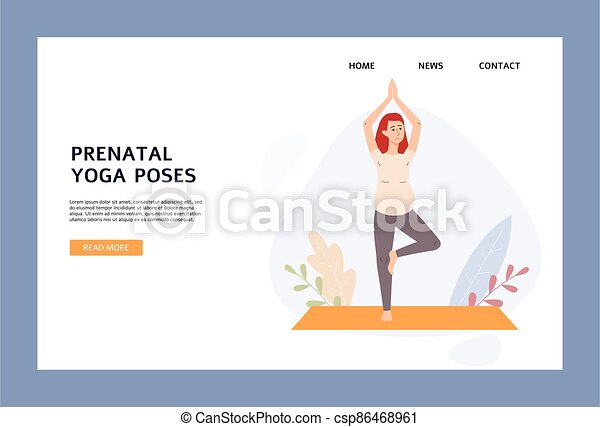
It is sometimes difficult to understand the anatomy and benefits of yoga poses. It is essential to practice yoga with your body in mind. Most people attribute their limitations and pain to tight muscles. However, compression is the real culprit. This isn't something that should be scary. It is common, and you may not have any problems with it. For those who want to reap the benefits, it is important to learn the anatomy of yoga postures. You'll find all the information you need to know about yoga poses.
Yoga poses' anatomy is heavily dependent on the muscles. The hamstrings, in general, are responsible for knee extension or flexion. They run from the pelvic plate to the elbow. The hamstrings play an important role in hip extension and flexion in yoga. However, there are many common variations of hamstrings. You should be aware of yours before you try any yoga poses.

The muscles responsible to extend the knee are called the hamstrings. They are found between the iliac spinal spine and the foot and insert onto the posterior side of the calcaneus. Therefore, the hamstrings can be used for many types yoga poses. Gastrocnemius is a femur-derived muscle that causes plantar flexion and originates from the medial and lateral condyles.
As mentioned above, not every human body is the same. While the yoga world would like you to believe otherwise, the truth is that every body is anatomically unique and will not perform the same poses. No matter if you are a woman or man, your anatomy can impact your ability to perform any pose correctly. To properly practice yoga, you need to know your anatomy.
Not only is it important to learn yoga postures but also the anatomy and function of different parts of your bodies. You need to know the basic types of muscles (referred to as the adducted or elongated). Know the difference between flexion & abduction. Also, be aware how your body moves in each. Begin a yoga practice if you're a beginner.

Contrary to photos of yogis, every person's bodies are unique. The result is that no two people can achieve the same yoga poses. A book containing photographs of dozens of yoga poses with their proper anatomy can help you get started, but it's not enough to do it. It is essential to learn the physiology and safety of yoga before you can practice it safely. An exercise video can help you learn how to perform a certain pose.
FAQ
Is it true that overeating protein causes kidney stones?
Protein helps to maintain healthy bones, tissue, and skin. But consuming too much protein can lead to calcium excretion through urine. This can lead to kidney stones.
It is important to remember that not all people get kidney stones from eating more than 2g protein per kilogram (2.2lbs) of body weight. Some people can eat high amounts of protein without getting kidney stones.
By watching how much sodium you consume, kidney stones can be prevented. Sodium is important for maintaining the body's water balance. High levels of sodium are linked to a greater risk of developing renal stones.
You can also try reducing your protein intake if you get kidney stones. Protein accounts for about half the daily caloric requirement of most adults. If you cut back on protein, you'll likely lose weight.
If you do decide to eat more protein, don't go overboard. Limit your intake to 20% of your total daily protein intake.
How many times per week do I need to exercise?
It depends on what type of exercise and how much time are available. It's a good idea to do moderate-intensity aerobic exercises 3 - 5 times per week. It is important to not overdo it. You will get the maximum benefits from your workouts if you do not exercise consistently.
Which exercises are best for me?
It all depends on your fitness goals. Some people choose to focus on endurance activities, such as swimming, cycling, and running. Others enjoy lifting weights or using resistance bands. There are many types and styles of exercise available today. Choose an option that suits your lifestyle.
Is it possible to drink alcohol while training?
Yes. Alcohol increases energy expenditure, speeds up recovery times, and reduces soreness.
Alcohol also increases insulin sensitivity, making it easier to absorb glucose.
However, alcohol can cause dehydration, which can slow down your metabolism. You may also experience a reduction in testosterone production which can lead to decreased muscle-building potential.
For these reasons, women shouldn't drink alcoholic beverages before working out. Women who drink heavily should wait at LEAST 24 hours before they start working out.
It is important that women who are nursing avoid alcohol.
Men should drink only one glass of alcohol per day.
Statistics
- According to the American Academy of Dermatology (AAD), men over 50 are at a heightened risk of developing it. (healthline.com)
- An estimated calorie range for moderately active adult males falls between 2,200 to 2,800 calories per day, depending on age. (eatright.org)
- 10 pounds in a month is likely during a lean bulking phase, especially for beginners. (muscleandstrength.com)
- By John Thompson Take a whopping 38% off a set of PowerBlock Pros. (menshealth.com)
- The PRS enabled risk stratification for overall prostate cancer and lethal disease with a four-fold difference between men in the highest and lowest quartiles (HR, 4.32; 95% confidence interval [CI], 3.16-5.89). (pubmed.ncbi.nlm.nih.gov)
External Links
How To
What nutrients does a man need daily?
Daily nutrition is essential for men's healthy growth. The body requires vitamins, minerals, proteins, carbohydrates, fats, water, fiber, and other essential elements.
You also need specific nutrients for different times in the day. To give you an example, the body uses energy it receives from food to make hormones and antibodies. When you get up, protein is used to repair and build muscle.
At night, your body breaks down fat and stores the extra energy as glycogen. Your body requires fewer calories, but still needs enough nutrients. You can have a snack at night if you feel hungry.
You need to eat enough carbs and protein when you exercise. You may feel sore muscles if you exercise hard.
You must ingest carbs and protein within two hours of training to prevent this. To get energy from glucose, your body will start to degrade stored glycogen.
In addition, you must consume protein immediately after completing your workouts. This prevents the breakdown of muscle tissue that occurs while you sleep.
Your body produces lactic acid during high levels of physical activity. It is a form of lactic acid that builds up in the bloodstream. This causes fatigue. To avoid this, you should eat foods rich in carbohydrates, such as fruits and vegetables.
Carbohydrates can give your body the energy it requires to recover from intense exercise.
Your diet may include lean meats like fish, eggs, milk cheese, yogurt or beans as well as lean proteins such as fish, eggs, egg yolks, cheese, yogurt, bean, peanuts and seeds.
All these foods are high-quality sources of protein. Protein promotes muscle growth and repairs damaged tissues. It also provides the amino acids your body needs to produce sex hormones and testosterone.
To maintain healthy skin, hair, and joints, you also need sufficient dietary fats. Healthy men need between 20% and 35% of their total caloric intake from fat.
Fat protects your heart from cancer and keeps it strong. It also keeps your brain functioning properly.
You can get most of the fat you need from vegetable oils like olive oil, sunflower oil, corn oil, soybean oil, peanut oil, and safflower oil.
These oils are high in monounsaturated fatty acids (MUFAs). MUFAs are good for lowering cholesterol and reducing inflammation. They protect your cells and prevent damage from free radicals.
Saturated fats (SFAs), are found mainly in animal products such as meat, milk products, and butter. SFAs are known to raise LDL ("bad") cholesterol and raise triglycerides. They can also increase weight and reduce belly fat.
Plant-based fats such as vegetable oils, seeds, nuts and grains contain polyunsaturated (PUFAs). PUFAs are good for your heart health and help to reduce inflammation. They also help control blood sugar and cholesterol.
Low HDL ("good") cholesterol can lead to erectile problems in men. Saturated fats are a major source of bad cholesterol. This lowers good cholesterol.
Men who eat lots of red meat or pork can develop prostate problems. This is because these foods contain high amounts of nitrates. When heated, nitrates are converted to nitrosamines. These compounds can cause lung cancer.
Most processed meats have nitrites and harmful chemicals. Avoid them.
According to the American Heart Association, you should limit your consumption of red meat to no more that 2 meals per week. Instead, opt for poultry, fish, legumes and tofu as well as whole grains bread and cereals.